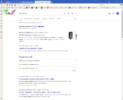OK back in the late 60's I was given a home work, "Why does a battery voltage go down?" it seemed so simple until I started to look at it, back then no internet, and the collage library did other types of battery, but not lead acid, and it is the same chemical change at start of discharge to finish, so it seemed to me likely caused by the sulphur deposited on the plates. I got 9 out of 10, and at the end of year got my auto electricians certificate with distinction, however back then we also talked about equalising charge.
So we would every few months put a vehicle battery on a low charge rate over night, and then top up the cells with distilled water. Larger traction batteries with forklifts would get an equalising charge every night, but the vehicle start battery was a little special, to get high amps the lead was not retained in the same way as traction batteries, and could fall off in time, so they needed a little more care, however you could still top them up.
Antimony was used to try and stick the lead to the plates, but a side effect was it caused gassing, using low antimony where spread more even allowed the introduction of low maintenance and maintenance free batteries, they has a reserve of electrolyte and a venting system designed to condense water and so they should not need topping up, but in essence still a flooded battery.
Even during the second world war we had gel batteries designed not to spill, but the absorbed glass mat also called valve regulated lead acid battery has only just enough electrolyte, and often batteries used on their sides, common with stair lifts, we saw them used with alarms, torches, mobility scooters, jump start packs, even e-bikes, but not until the stop/start technology did we see them being used on cars.
As always still benefits from an equalising charge, but the length of that charge and the current needs to be far more controlled to what we did with the older types of lead acid, we have used stage charging for years, forklifts, narrow boats etc. But with the AGM we use the stage charging a lot more, I noted with stair lifts with a trickle charge batteries would last 2 to 3 years, but with a stage charger can be looking at 7 years or more. Using a fixed voltage as with most car alternators is a bit hit and miss, for a 12 volt (6 cell) battery need around 13.2 volt, but it takes so long to recharge at that, we actually use up to 14.4 volt, and the manufacturer guesses on how high it needs to be to hit a happy average. Most cars use 13.8 volt, but the open voltage setting for a RB208 dynamo regulator was 16 volt, we have always over charged to some extent, but we no longer use a dynamo with a free wheel and a third brush to regulate charge rate.
Today the engine management works out what is required, and I had left the trade before that came in, so don't know what it does exactly, but know when a new battery is fitted, the computer needs telling.
I did not want to charge the battery on the Jaguar ZE as not sure how this may upset the computer, but during Colvid lock down no option, but the mains powered charger is a very low rate of charge and is a constant current rather than constant voltage control. Mine is from Lidi, but ring, Durite, etc, all make these small chargers. On mine there are 5 charge levels, 3.8, 3, 0.8, 0.1 and zero amps, and it uses the voltage to decide when to change between the rates.
So this
is typical for AGM chargers, the problem is it auto detects 6 volt or 12 volt, so a battery under 7.3 volts it assumes is 6 volt, chargers designed for 12 volt only can recharge batteries which are much lower voltage, as a result to recharge an abandoned battery, only way to get charger to work is to put a second battery in parallel, and I have done this.
It was a surprise, I was using a wifi linked energy monitor before the charger, so it was producing a graph of the charge rate, it charged the donor battery and switched off, every so often it would drop below 12.8 volt and there would be a short spike until it hit 14.4 volt then off again, then after around 2 weeks it was as if some one had flicked a switch, it auto went to 0.8 amp charge for around 1.25 times the amp hour rate, and at the end of this the battery seemed fully charged.
I had never considered leaving a lead acid battery on charge for so long, since the first time I have repeated this a few times, mainly small 7 Ah batteries out of things like UPS, however also had a cell go short circuit on one of a pair of 35 Ah mobility scooter batteries which even at just a 5 amp charge rate took out the other battery of the pair, which is I suppose why the Lidi charger once it has reached the 3.8 and 3 amp thresh hold voltages will not return automatic to those rates, it will only alternate between 0.1 and 0.8 amp.
The c-tek charger does return to max output, good for using with a battery also in use, caravan, etc, but not for leaving unattended. To be fair there is a whole range of c-tek chargers up to 25 amp specially designed for caravan and boat use.
What seems odd is BS 7671:2008 say max voltage 14 volt, but most stage chargers will exceed that, for a floated battery 14.8 volt is common.


